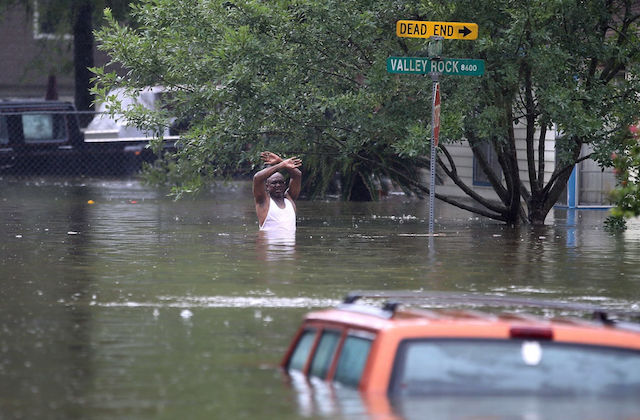As the Florida Panhandle, Georgia and the Carolinas brave Hurricane Michael, residents and elected officials will likely soon turn to the Federal Emergency Management Agency (FEMA) for aid. Yet a report in The New York Times finds that FEMA assistance that goes toward rebuilding towns and infrastructure is often distributed with a focus on immediate repairs and rebuilding with little regard for fortifying locations against future disasters.
In the investigative report, “As Storms Keep Coming, FEMA Spends Billions in ‘Cycle’ of Damage and Repair,” journalists Kevin Sack and John Schwartz examine a lack of knowledge by local officials on how climate change exacerbates sea levels rising and storm surges—as well as the Trump administration’s disregard of the science of global warming. The writers note that since 1994, FEMA has provided at least $81 billion to state, territorial and local governments in response to disasters, adding:
rnt
But an examination of projects across the country’s ever-expanding flood zones reveals that decisions to rebuild in place, often made seemingly in defiance of climate change, have at times left structures just as defenseless against the next storm.
It is the responsibility of local governments, not FEMA officials, to decide how to use the federal dollars:
rnt
“Human settlements have been designed in a way that reflects a climate of the past, and this increases the likelihood that disaster-related losses will continue to rise,” said Gavin Smith, a professor at the University of North Carolina at Chapel Hill who directs the Coastal Resilience Center of Excellence, a research consortium funded by the Department of Homeland Security. “This also means we need to rethink how and where we build before the storm, as well as how and where we reconstruct public buildings and infrastructure in the aftermath of extreme events.”
This inclination to design in a way that “reflects a climate of the past” can be cited as the reason why New Orleans’ airport was repaired with FEMA dollars after Hurricane Katrina in a way that did not protect it from future storm surges any better than it was pre-hurricane, says the article. It also examines how the $105 million Plaquemines Parish Detention Center was built in the same place in Lousiana where the former Plaquemines prison was destroyed by Katrina. The new facility must be evacuated during every major storm because it is located in a flood zone.
The town of Princeville, North Carolina, is a majority-Black town of 2,000 people located on the Tar River. In 1999, every structure in town—including the school and fire station—was destroyed by Hurricane Floyd:
rnt
Leaders of the town, which was settled by newly emancipated slaves, rejected suggestions from state officials to move the entire community to higher ground. Instead, FEMA spent more than $5 million in public assistance grants to clear debris, build a new town hall and school, repair other buildings and replace fire trucks, a garbage truck, even a riding lawn mower, the agency’s records show.
t
Seventeen years later, Hurricane Matthew swamped Princeville once again. Repairs are now being made to the school, the fire house, the town hall, the recreation center, the senior center and a museum, at a cost of $2.5 million and counting (the town typically pays a 25 percent share). In mid-September, Princeville narrowly missed its third inundation in two decades, when Florence filled the Tar just shy of flood stage.
An executive order signed by former President Barack Obama in 2015 mandated that climate science be considered in the design of federally funded projects. President Donald Trump rescinded that order in August 2017:
rnt
The Trump administration’s approach on climate change ignores loud warnings from government agencies about the budgetary threat it poses. The bipartisan Congressional Budget Office projected in 2016, for instance, that hurricane damage would “increase significantly in the coming decades because of the effects of climate change and coastal development.” As a result, government spending for relief and recovery will outpace economic growth and devour an ever larger share of gross domestic product, the analysts concluded.
t
“You can’t continue this with the pace and intensity of events we’ve seen today,” said James Lee Witt, who led FEMA throughout the Clinton administration. “Somebody has got to break the cycle of damage, repair, damage, repair.”
Read the entire article here.
